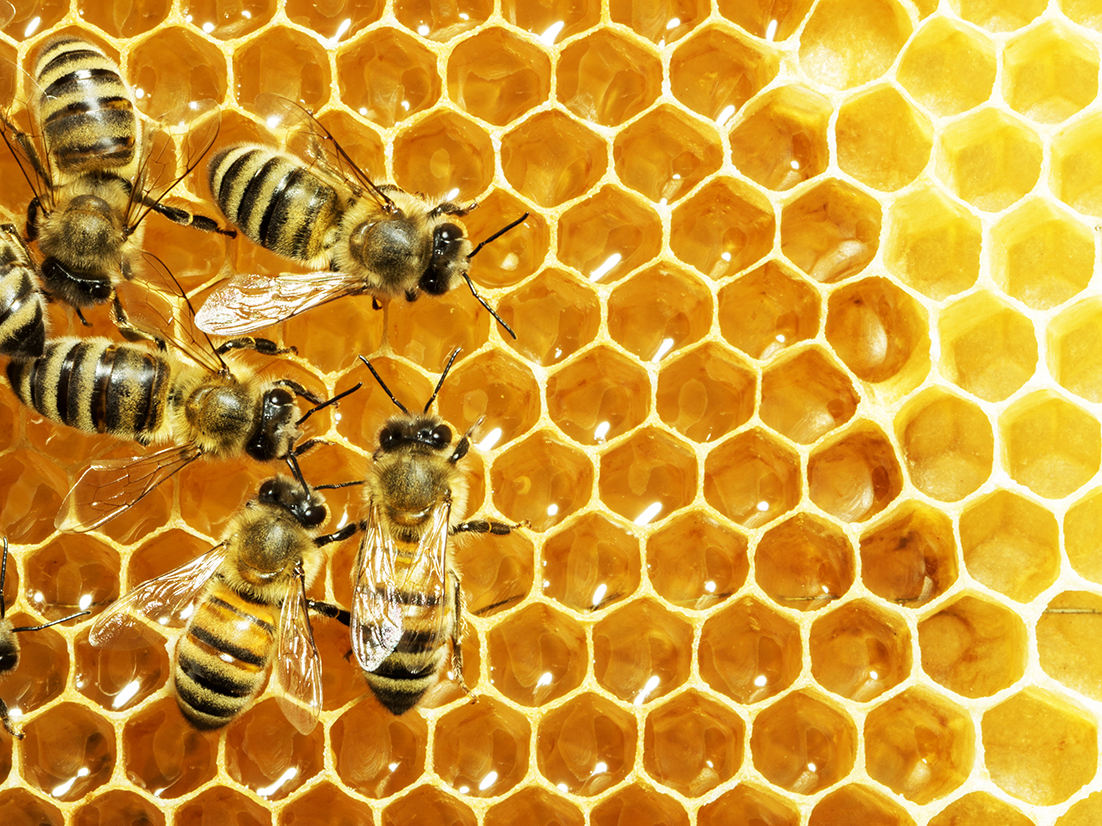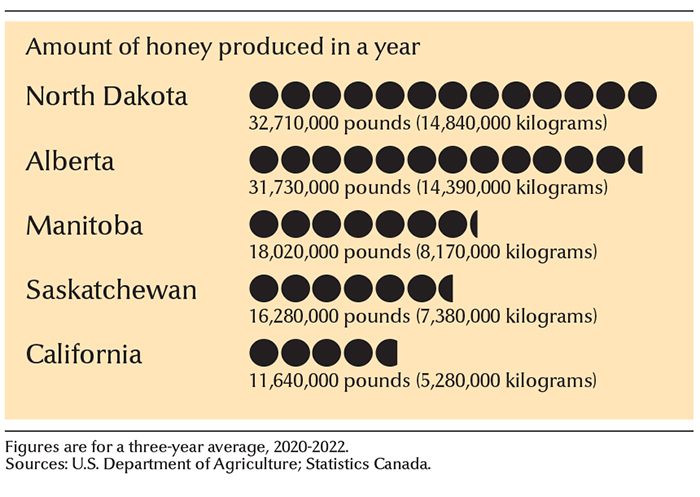Honey is a sweet, thick fluid made by bees from flower nectar, a sugar-filled, watery liquid. Worker bees sip nectar from flower blossoms and carry it to their hives, where they share it with other worker bees. Each bee has a pouch in her body, called a honey stomach, where the nectar is temporarily stored. In the pouch, enzymes produced by the bee mix with the nectar. An enzyme is a molecule that speeds chemical reactions. Most enzymes are proteins. The enzymes in the honey stomach promote inversion, a process in which the sugar in the nectar breaks down into two simple sugars, fructose and glucose.
Loading the player...How a bee makes honey
After inversion is complete, the bees use their mouthparts to expose the nectar to the hive’s warm air. Some water in the nectar evaporates. The bees then deposit the nectar in a honeycomb, a mass of six-sided compartments called cells. In the cells, water continues to evaporate from the nectar. Nectar becomes honey when it contains, on the average, less than 19 percent water by weight.
Kinds of honey.
The color and flavor of honey depend upon the kinds of flowers that supply the nectar. Honey ranges in color from white through dark amber, and it can have a mild or strong flavor. Most honey sold in stores is mild.

The most common honey plants are alfalfa, clover, aster, sunflower, citrus, goldenrod, and various wildflowers. Many regional plants in the United States produce excellent honey. In the East, tasty honeys come from nectars of buckwheat, sumac, and the yellow-poplar, or tuliptree. In the Midwest, honey from basswood nectar is popular. In the South, bees produce tasty honeys from tupelo, mesquite, sourwood, and gallberry nectars. White sage honey is popular in California.
Most honey will eventually granulate (develop sugar crystals) because honey is made primarily of sugar and water. Commercial users such as bakers heat honey to delay granulation. Granulated honey may be turned back into liquid by placing a container of honey into warm water. Finely granulated honey is sometimes sold as creamed honey.
Food value.
Honey is an excellent energy food because it contains simple sugars that the body can use quickly. Honey also contains small amounts of minerals and other materials used by the body.
The honey industry.
World production of honey totals about 4 1/2 billion pounds (2 billion kilograms) each year. China is, by far, the leading honey-producing country. Other important honey-producing countries include Argentina, India, Iran, Turkey, Ukraine, and the United States.

Many beekeepers in the United States travel with their bees from the Southern States to the North each year to follow the blooming of honey plants. The beekeepers carry their hives on large trucks that are covered with nets. Most beekeepers sell their honey after it has been removed from the honeycomb by a honey extractor. This machine whirls the honeycombs around, forcing the honey out. After the honey has been removed from the honeycomb, it is ready to be packaged and sold.
History.
Honey was an important sweet in ancient times. During the Middle Ages, people kept bees in woven straw baskets called skeps. In the 1500’s and 1600’s, European colonists brought honey bees to the Americas.
